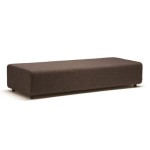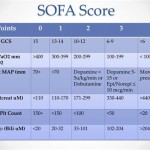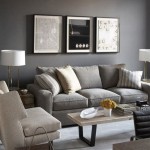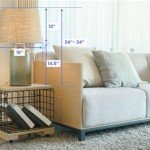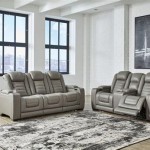Pottery Barn Leather Sofa Reviews: A Comprehensive Guide
Pottery Barn has cultivated a strong reputation for its commitment to quality, style, and durability in home furnishings. Among their offerings, the leather sofa stands out as a centerpiece item, often representing a significant investment for the homeowner. This article provides a comprehensive review of Pottery Barn leather sofas, delving into key aspects such as design, construction, leather quality, comfort, and customer feedback. The intent is to equip potential buyers with the necessary information to make an informed purchasing decision.
Design and Aesthetic Versatility
Pottery Barn leather sofas are renowned for their diverse design options. The company offers a wide range of styles, from classic and traditional to modern and contemporary. This versatility allows consumers to find a sofa that complements their existing décor and personal aesthetic preferences. Specific design features to consider include arm styles (rolled, track, English roll), back styles (tufted, pillow back, tight back), and leg styles (tapered, turned, block). The availability of different frame silhouettes further expands the choices, encompassing sectionals, loveseats, and classic three-seater sofas.
The color palette offered by Pottery Barn in their leather sofas is equally extensive. Beyond the standard shades of brown and black, customers can often find options in grey, navy, green, and even more vibrant colors, depending on the specific collection. This allows for personalization and the ability to make a statement with the sofa as a focal point in the room. Furthermore, many Pottery Barn sofas offer customization options, such as choosing the leather type and color, and even selecting different leg finishes. This level of customization caters to customers seeking a truly unique and personalized furniture piece.
The scale and proportions of Pottery Barn leather sofas are meticulously considered in the design process. Whether intended for a compact apartment or a sprawling living room, there are models designed to fit various spaces. The depth of the seating, the height of the back, and the overall dimensions of the sofa are all factors that contribute to the overall visual appeal and functionality. Attention to detail, such as the placement of seams, the stitching patterns, and the hardware used, further enhances the aesthetic quality of these sofas.
Construction and Material Quality
The durability and longevity of a leather sofa are directly correlated with the quality of its construction and the materials used. Pottery Barn typically employs kiln-dried hardwood frames in their sofas. Kiln-drying the wood ensures that it has a lower moisture content, which minimizes the risk of warping or cracking over time. This sturdy frame provides a solid foundation and contributes to the overall stability of the sofa.
The suspension system within the sofa is another crucial element affecting comfort and support. Pottery Barn often utilizes a combination of sinuous springs and webbing to create a resilient and supportive seating platform. Sinuous springs, also known as "no-sag" springs, are S-shaped metal springs that are evenly spaced and attached to the frame. Webbing is used to provide additional support and prevent sagging. This combination helps to distribute weight evenly and maintain the shape of the cushions over time.
The quality of the leather itself is a significant factor in evaluating a Pottery Barn leather sofa. The company typically offers sofas upholstered in various leather types, including full-grain, top-grain, and bonded leather. Full-grain leather is considered the highest quality, as it retains the natural grain of the hide and develops a rich patina over time. Top-grain leather is sanded and finished to create a more uniform appearance. Bonded leather is made from leather scraps and fibers that are bonded together and then coated. While more affordable, bonded leather is less durable and does not have the same luxurious feel as full-grain or top-grain leather.
The cushioning materials used in Pottery Barn leather sofas are designed to provide both comfort and support. The cushions are typically filled with a combination of high-density foam, down, and feathers. High-density foam provides firm support and helps to maintain the shape of the cushions. Down and feathers add softness and create a plush seating experience. The ratio of these materials can vary depending on the specific sofa model and the desired level of firmness.
Comfort and Ergonomics
Beyond aesthetics and construction, the comfort and ergonomics of a leather sofa are paramount. Factors contributing to comfort include seat depth, back height, armrest placement, and cushion firmness. Pottery Barn offers sofas with varying seat depths to accommodate different body sizes and seating preferences. A deeper seat allows for more lounging and relaxation, while a shallower seat is better suited for more formal seating arrangements.
The height of the backrest is also an important consideration. A taller backrest provides more support for the neck and shoulders, while a lower backrest offers a more modern and streamlined look. The angle of the backrest can also affect comfort. A slightly reclined backrest can promote relaxation, while a more upright backrest is better for reading or conversation.
Armrest placement and design contribute to the overall comfort of the sofa. The height and width of the armrests should be comfortable for resting the arms and shoulders. Rolled armrests provide a more traditional and comfortable feel, while track armrests offer a more modern and streamlined look. The padding and cushioning on the armrests should also be adequate to prevent discomfort.
Cushion firmness is a subjective preference, but it's important to consider how the cushions will feel over time. Softer cushions may initially feel more comfortable, but they may also lose their shape and support more quickly. Firmer cushions may take some time to break in, but they will generally provide better support and maintain their shape for longer. The density and composition of the foam and filling materials are key factors determining cushion firmness.
The overall ergonomics of the sofa should promote good posture and prevent discomfort. A well-designed sofa will support the natural curvature of the spine and allow for comfortable and relaxed seating positions. The height of the seat should be appropriate for the user's height, allowing their feet to rest comfortably on the floor. The depth of the seat should also be appropriate, preventing the user from having to slouch or strain to reach the backrest.
Maintenance and Durability
Leather sofas require proper care and maintenance to preserve their appearance and extend their lifespan. Pottery Barn typically provides care instructions for their leather sofas, which should be followed carefully. Regular cleaning is essential to remove dust, dirt, and spills. A soft, damp cloth can be used to gently wipe down the leather surface. Harsh chemicals and abrasive cleaners should be avoided, as they can damage the leather.
Conditioning the leather is also important to prevent it from drying out and cracking. Leather conditioners help to moisturize the leather and keep it supple. The frequency of conditioning will depend on the type of leather and the environment in which the sofa is located. In general, it is recommended to condition the leather every few months or as needed.
Protecting the leather from sunlight is crucial to prevent fading and discoloration. Direct sunlight can damage the leather over time, so it is advisable to keep the sofa out of direct sunlight or to use curtains or blinds to filter the light. Avoiding extreme temperatures and humidity is also important, as these can also damage the leather.
The durability of a Pottery Barn leather sofa will depend on the quality of the leather, the construction of the frame, and the frequency of use. Full-grain leather is generally more durable than top-grain or bonded leather. A sturdy hardwood frame will provide better support and prevent the sofa from sagging or breaking down over time. Regular cleaning and maintenance will also help to extend the lifespan of the sofa.
Customer Feedback and Reviews
Customer feedback provides valuable insights into the real-world performance of Pottery Barn leather sofas. Online reviews and testimonials can offer information about the comfort, durability, and overall satisfaction of other customers. It is important to consider a range of reviews and to look for common themes or patterns. Pay attention to what customers say about the quality of the leather, the comfort of the cushions, and the overall durability of the sofa.
In particular, look for reviews that address specific concerns or issues. For example, some customers may complain about the leather being too stiff or easily scratched. Others may mention issues with the cushions losing their shape or the frame creaking. By reading a variety of reviews, you can get a better sense of the potential pros and cons of a particular sofa model.
It’s prudent to consider both positive and negative reviews to gain a balanced perspective. Positive reviews can highlight the strengths of the sofa, such as its stylish design, comfortable seating, and durable construction. Negative reviews can reveal potential weaknesses or areas for improvement. By weighing the positive and negative feedback, you can make a more informed decision about whether a particular sofa is right for you.
It is important to note that customer reviews are subjective and may not always be representative of the overall quality of the product. However, they can still provide valuable insights and help you to make a more informed decision. When reading customer reviews, be sure to consider the source and to look for reviews that are detailed and specific.

Looking For Real Reviews Of Pottery Barn Turner Leather Soda

Pottery Barn Sofa Review 2024 What To Know

Pottery Barn Sofa Review 2024 What To Know

Pottery Barn Chesterfield Sofa Review And Lower Cost Alternatives My Pas Living Room

Pottery Barn Chesterfield Sofa Review And Lower Cost Alternatives My Pas Living Room

Pottery Barn York Sofa Review Life On Virginia Street

Is A Pottery Barn Chesterfield Worth The Cost Viva Veltoro

The Fate Of Leather Sofa Miss Mustard Seed

Pottery Barn Chesterfield Sofa Review And Lower Cost Alternatives My Pas Living Room

My Pottery Barn Living Room Pearce Sectional Review Viva Veltoro

